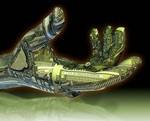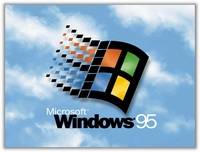Yesterday, I was with my wife in the L’Occitane store. The shelves were filled with fragrances, soaps, lotions: all sorts of handcrafted beauty products. It occured to me while looking at the labels that I have no idea how these products were made. I am reasonably versed in chemistry, but the process of manufacturing perfume is not something I know anything about.

In general, I am just not good with physical things, because I am a software person. I’ve always been fascinated by people who can easily make sense of physical objects, because for me it takes a lot of effort even to put together children’s toys. My brain is wired differently, to see patterns in software, not in hardware. But most people are the other way around.
Yet, while looking at the bottles in the L’Occitane store, I wondered: could it be that the world is shifting from physical to digital? At first glance it is impossible, because we live in a physical world. But increasingly, we are surrounded by all sorts of software that fundamentally works differently from hardware. In this post, we’ll look at the interplay between physical and digital and argue that we are, in fact, heading towards a world dominated by digital.
A Brief History of Making Physical Things
Before we dive into the realm of software, let’s look briefly at how we got here. Clearly, the history of humanity is the history of hardware. Since the Stone Age, when we invented the hammer, the world around us has been, so to speak, a nail. For the past several thousand years, we figured out how to use physics and chemistry to make physical objects. For a long time, we were craftsmen, until the industrial revolution brought scale and systematic manufacturing.

The main thing we learned is patterns in physical objects. We know that we can bend them under certain conditions. We know that there is friction. We know that things react differently to heat. The millions of facts that occupy our lives have to do with how we interact with the physical world and make physical things. These patterns get wired into our brains and help us live our daily lives.
Software 1.0: Why Computer-Phobia Happened to The Mainstream
Computers have software inside that does not behave like physical objects do. The key thing about software is that it is soft and that the conventional laws of physics do not apply to it. As a result, it’s hard for people to picture what is going inside. It is hard for people with brains trained to deal with physical things to understand how software works. Because there are no physical laws we are used to, what are we to expect?

I constantly meet really smart non-technical people — doctors, lawyers, teachers — who have no clue how computers work. They treat them as magic black boxes that randomly break and never make sense. Why? Because software is a fundamentally different kind of system. It does not behave like the other things around us that we are used to.
On top of being different, software was really hard to use as recently as 5 years ago. PCs and Windows are to blame for the computer-phobia that still dominates the mainstream. My wife works for a large pharmaceutical company, and her Dell with its Windows 2000 is a monster. I do not blame her for being confused. In addition to being unbearably slow, the computer just makes no sense with its crazy administration scripts, incompatible drivers, annoying popups, endless choices, and daily crashes.
There is nothing in the physical world as complicated or confusing as her computer. All of the systems in our home work with the push of a button; all her daily routines are much simpler than figuring out how to turn off auto-spellcheck in Microsoft Word. Like most people, my wife is perplexed by the complexity of her work computer. But thankfully, things are turning around.
Software 2.0: Apple, Ajax, Video Games, and the New Laws of Physics
We changed our household computer to an Apple in 2004 and later on got one of the first iPhones when they came out. Obviously, my wife has no trouble using Apple products, because they are simple. More important, they, like physical things, behave as expected. Every user action results in a reaction that makes sense. There are way fewer choices, and things do not pop up out of nowhere.

Even better, this new kind of software proves to the user that the digital world can be superior to the physical one. There is no friction; things move around effortlessly; and they do work. This is not happening just with Apple products; it is happening all over the web. With the advent of AJAX, a new breed of web applications is teaching users that software can indeed work better than hardware. And that it can be way more fun.
It’s the fun element that is likely going to be the tipping point, because it involves kids, our future. The latest video games are simply stunning. Like Apple software, they feature a lot of physical realism and behave as users expect. But in addition, they add a lot of special behavior only possible in the digital world. And it’s not just about flying or instantly transporting from one place to another. Video games are creating a whole new reality that is an intricate blend of physical and digital.
Our kids are growing up native to this new digital world. To them, the new rules of digital physics are what the rules of physical physics are to us. They take these new rules for granted, because that is just how all our brains work.
Techies + Mainstream + Kids = Software Revolution
I never had trouble grasping software. To me, its inner workings and abstractions always made more sense than the physical things around me. But this is not so for many other people. Yet, the shift is on its way. Good software is becoming an integral part of our lives. Apple is one of the first and most visible examples of how software is taking over the hearts and minds of mainstream consumers. Its software is beautiful, simple, it works the way we expect it to, and people are starting to love it.

And this love is the first step to truly getting it, to understanding how something works. Because this new software is simple and fun, people are becoming attached to it and are willing to spend more time with it and, ultimately, to understand it well. This new software has a shot at making people get it, just like they get hardware.
And kids, of course, are already there. For them, all of this novelty is effortless and natural. It’s a ton of fun, and they do not think twice about which buttons to press; they just know. So, with techies, the mainstream, and kids on board, we are poised to enter this brave new world dominated by software. The impact of this new world is going to be huge because, whether we like it or not, we will no longer be the same. Our brains, while never forgetting the laws of physics, will increasingly adapt to the laws of this new, digital physics.










